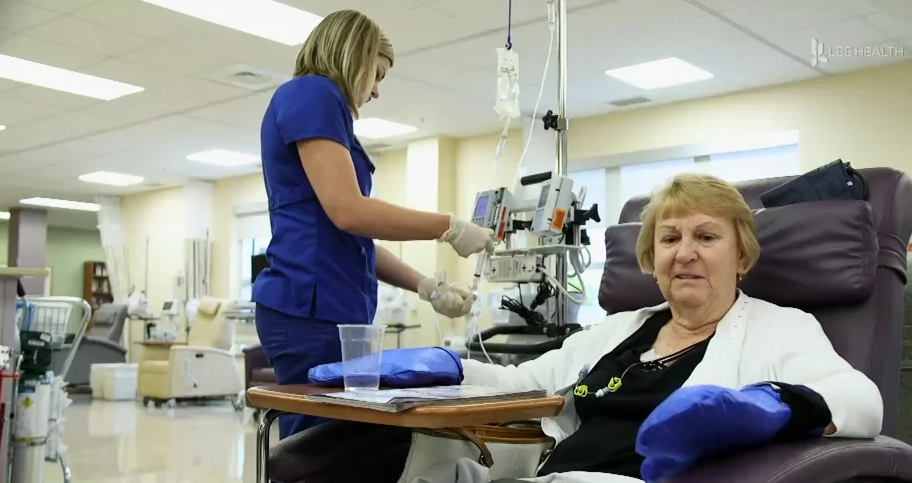Chemotherapy
- davorkust

- May 22
- 4 min read
Updated: 6 days ago
Chemotherapy refers to the use of cytostatics, or drugs whose basic mechanism of action is to kill rapidly dividing cells. Most cells in the body are constantly dividing, but an important feature of cancer cells is that they divide uncontrollably and rapidly, which is precisely the basis for the use of chemotherapy. Chemotherapy can be used to treat cancer, reduce the risk of disease recurrence, slow tumor growth, or reduce symptoms (for example, shrinking a tumor that causes pain). Chemotherapy is used in the treatment of almost all types of cancer, either alone or in combination with other types of treatment, depending on the type and extent of the disease and the patient's general condition. Neoadjuvant chemotherapy refers to the use of chemotherapy to shrink a tumor before surgery or radiotherapy, so that subsequent surgery or radiotherapy can be less radical. What is "sparing" chemotherapy? Although laypeople sometimes use the term, it can actually be said that there is no such thing as sparing chemotherapy. The correct term is adjuvant chemotherapy, which is used after surgery (or radiotherapy) when the entire tumor mass has been removed. So, this is a situation when imaging studies (e.g. CT) after surgery cannot confirm the existence of a tumor. Why is this therapy used at all? Research shows that cancer cells are found in the blood of most patients already in the earliest stages of malignant disease (a summary of one such study conducted by Dr. Kust in 2016 can be viewed at the link), and this is the explanation why sometimes even very small tumors can metastasize. These circulating tumor cells cannot be surgically removed, of course, nor can they be detected by standard diagnostic methods. The purpose of adjuvant chemotherapy is precisely to destroy circulating tumor cells in the blood and thus reduce the risk of disease recurrence and the occurrence of metastases. Finally, chemotherapy is also often used in metastatic disease, when the disease has spread to various parts of the body because it acts systemically (on the entire body).
Side effects of chemotherapy.
The downside of chemotherapy is that it is a non-selective treatment, and in addition to cancer cells, it can also damage other cells in the body that divide rapidly, such as skin cells, intestines, and blood cells, which is why this type of treatment often causes side effects. You can read more about possible side effects during chemotherapy and how to alleviate them in a separate article.

Chemotherapy can be administered intravenously (directly into a vein as a slow infusion), orally (tablets, capsules), as an injection (into the muscle or subcutaneous fat), intrathecally (into the space between the spinal cord or brain and their coverings), intraperitoneally (into the peritoneal cavity located inside the abdomen and containing the abdominal organs), intraarterially (into the artery that carries blood to the tumor) and topically (a cream applied to the affected skin), depending on the specific cytostatic. Intravenous and oral forms of administration are by far the most common. In patients who have poor peripheral veins or those that have been damaged due to long-term use of therapy, the installation of a port system, which is placed under the skin with a minor procedure, may be considered. The port system is usually placed in the upper chest, is connected to a larger vein and allows for easy administration of therapy or blood sampling. Chemotherapy is given according to specific protocols, which define the cytostatic that should be given to the patient, the dose of the drugs and the frequency of chemotherapy, all based on scientific evidence obtained from conducted clinical studies. The doses of drugs are calculated according to the patient's body surface area. There are protocols with one, two or three cytostatics, and one administration is called a cycle. Each cycle is followed by a break (usually 1 to 3 weeks, depending on the protocol), so that the patient can recover and be ready for the next cycle of treatment. If the patient has significant side effects or unsatisfactory blood tests, the break period can be extended. The choice of protocol to be applied to a particular patient depends on the type of cancer, stage of the disease, any previous use of chemotherapy, the patient's general condition and possible other health problems. Depending on the protocol, some patients may receive treatment through a day hospital (the patient receives therapy and goes home) or with hospitalization (the patient stays in the hospital for one or more days).
"I just had chemotherapy. Can I be in the same room with my family when I get home?" Yes - in the vast majority of cases, you can be in contact with family members, including children and pets, immediately after returning from the hospital. Chemotherapy does not make you "radioactive" or dangerous to others. Important to know: Some cytostatics are excreted from the body in urine, sweat or stool for 48 hours. Therefore, it is advisable to wash your hands regularly after using the toilet, lower the toilet seat before flushing, and wash your clothes and bedding separately if they are very dirty. There is certainly no need to isolate yourself, because the most important thing you need is the support and closeness of your loved ones.
Continue reading:
Need more information about this topic? Contact us.


